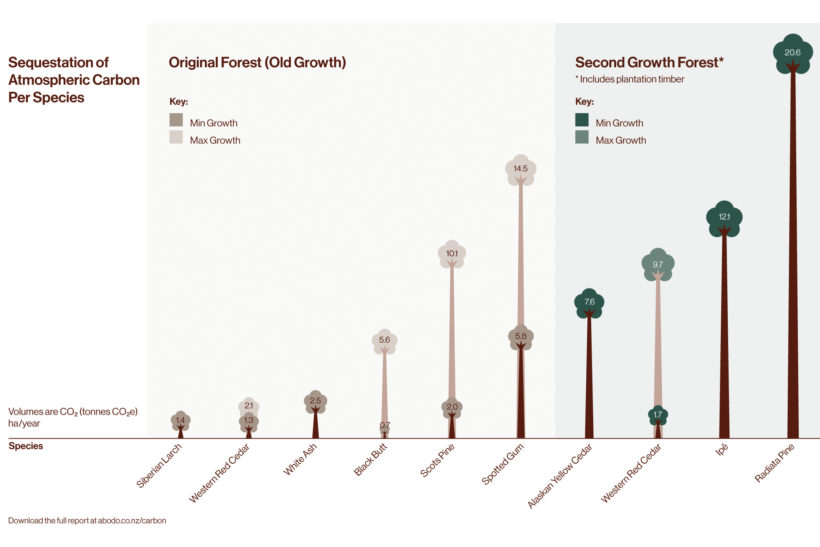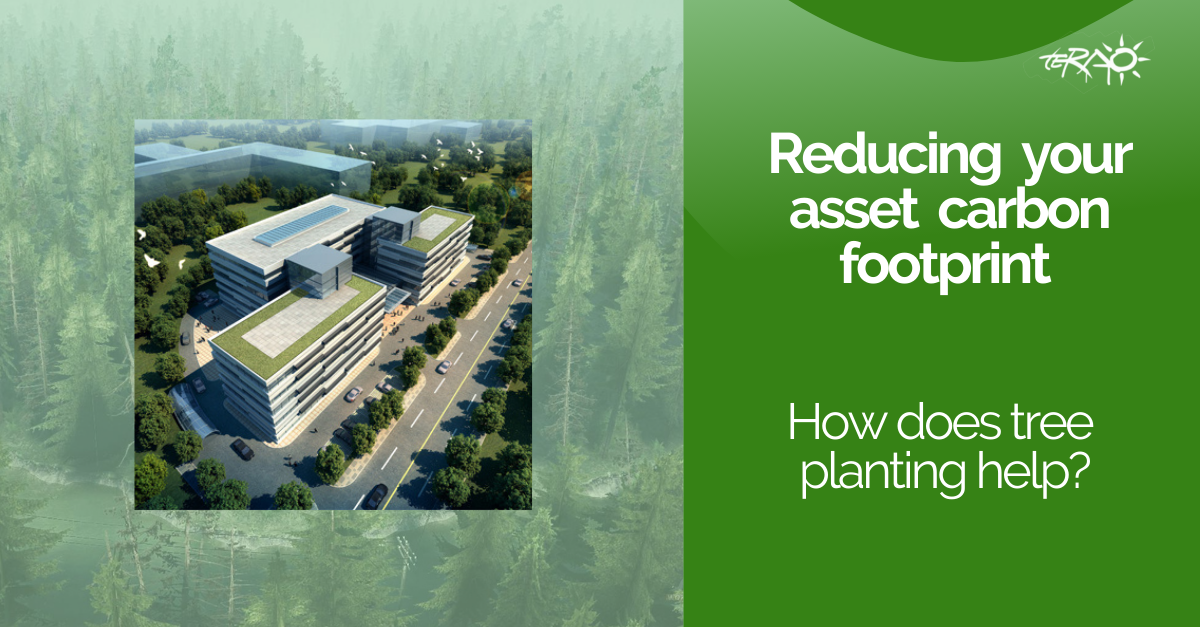As you can see in our previous articles, TERAO team is capable of carrying out Carbon footprint assessments for our clients. Based on the assessment data, we would work together with our clients to develop optimum action plans to best reduce their carbon footprint.
After reducing energy and after renewable energy implementation, to be done firstly, one of the ideas is to compensate for carbon emissions by planting trees on site.

Planting trees is a fabulous idea when it comes to reducing your carbon footprint. As trees grow, they will help reduce climate change by removing and storing carbon dioxide from the air and releasing oxygen back into the atmosphere. Trees also come with many other benefits to us. They are able to offer cooling shade, block cold winter winds, increase birds and wildlife, purify our air, prevent soil erosion, and add natural beauty to our homes and communities. But the problem is, how exactly we should plant to maximize the carbon absorption rate
How much CO2 can trees absorb?
The ability of trees to absorb CO2 depends on their growth stage and the species. It can vary from 5 to 15 tons/year/ha (cf. illustration below, 1 ha = 10,000 m²). Generally, younger trees that have a fast-growing speed tend to have a higher carbon speed.

Examples of CO2 absorption rates of different types of trees (source: https://www.abodo.co.nz)
Trees that are able to absorb a higher quantity of carbons are for example white elm (白榆树), and Elaeagnus angustifolia (沙枣), or also bamboo, if we talk about local flora (in China) with an average of 15-ton carbon/ha/year.
However, a large area is preferred for the absorption rate to be more significant, which customers may not have available on their site, in this case, they need to turn to forestry management specialists. Another point to be careful about is to avoid monoculture, discussed in the following section, as it could deteriorate the local flora and fauna.

Bamboo is a high-absorbing CO2 plant, but it depends on the way it is planted
Biodiversity vs Monocultures
Another important factor that helps reduce carbon is to increase biodiversity and not have a monoculture style. The monoculture style of planting is to grow a single plant species in an area. We do not recommend that because they not only do not absorb as much carbon but there are also many downsides of it. For instance, monoculture can be extremely vulnerable to diseases, especially if all individuals have similar genes. They can also deplete the soil nutrients in a short time.
Therefore, we recommend to have a more biodiverse style of planting. Biodiversity is the biological variety and variability of life. By increasing the biodiversity of the plants on-site, it is able to absorb more carbon due to its productivity. Research shows that species rich forests are able to store twice as much carbon as monocultures.

Monoculture VS Biodiverse Planting
Compensate your carbon footprint with Agroforestry projects: The Gold standard and Verified Carbon Standard (VCS)
Carbon compensation is a market, so we should be careful with the “Carbon Compensation” expression. The forest that could help to compensate for carbon should be a project certified under either the Gold standard (https://www.goldstandard.org/) or VCS (Verified Carbon Standard) VERRA to be able to tell we are compensating carbon.


Gold Standard and VCS standard
Articles reference come from the following articles:
- The bear’s necessity | Environment | The Guardian
- Bamboo Botanicals – Interesting Bamboo Facts
- Trees Improve Our Air Quality (urbanforestrynetwork.org)
- 树木减排能力榜出炉 榆树年吸碳8公斤居首 (china-nengyuan.com)
- Picture-We Can’t Survive With Monoculture… Biodiversity it is! | by Katherine Cheng | Medium
- Picture- https://www.abodo.co.nz/resources/articles
If you need more details, please do not hesitate to contact Gaspard Lemoine-Scelles, our Business Development Manager, at this address glemoinescelles@teraoasia.com. It would be a pleasure for us to contribute to the reduction of your asset carbon footprint and make this world a greener one.
Written by Minmin (Jessie) Sun



![[Case Study]Boosting Productivity and Safety Through Optimized Factory Comfort](https://teraoasia.com/wp-content/uploads/2025/09/Cover-photo-150x150.png)
Leave A Comment